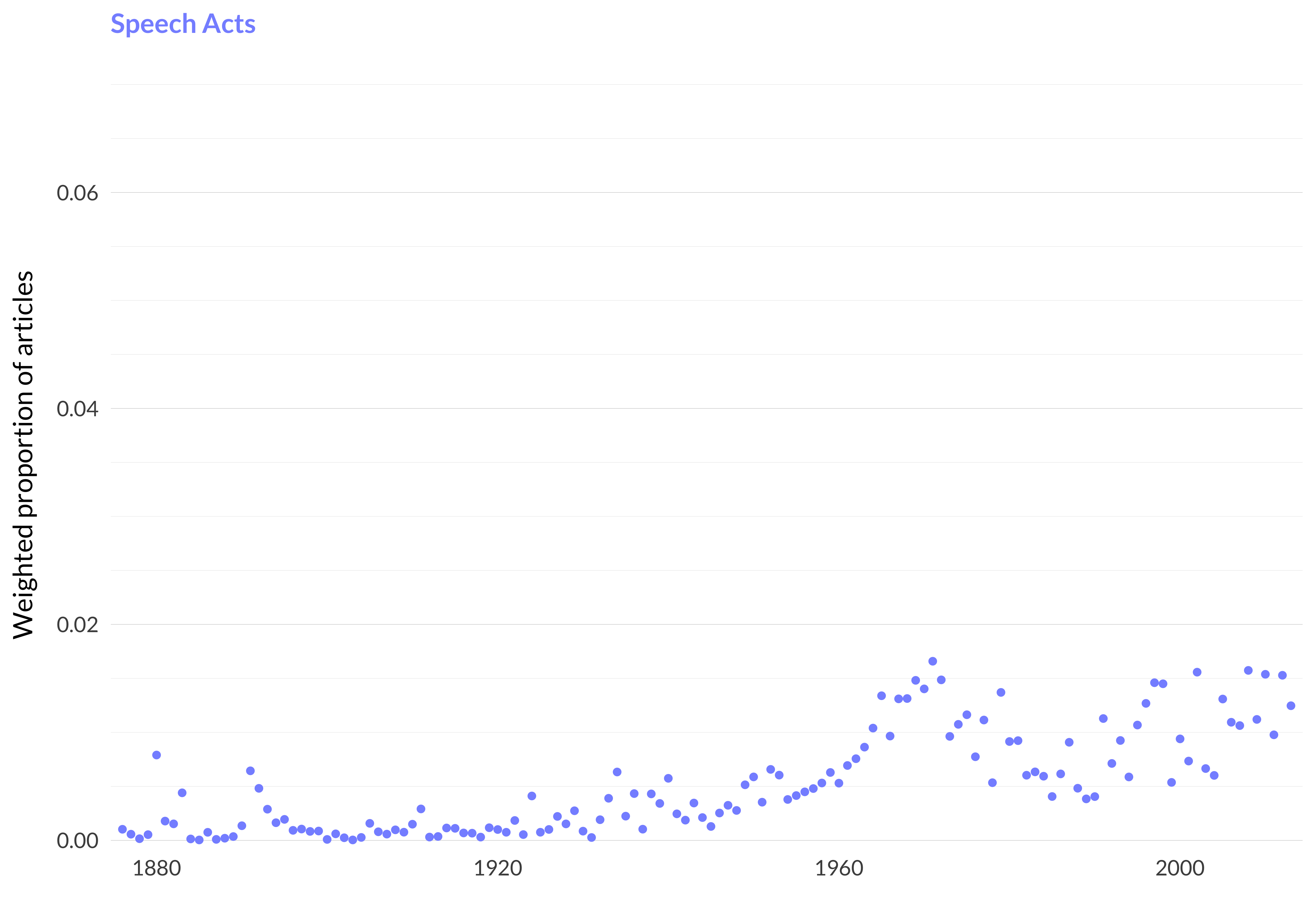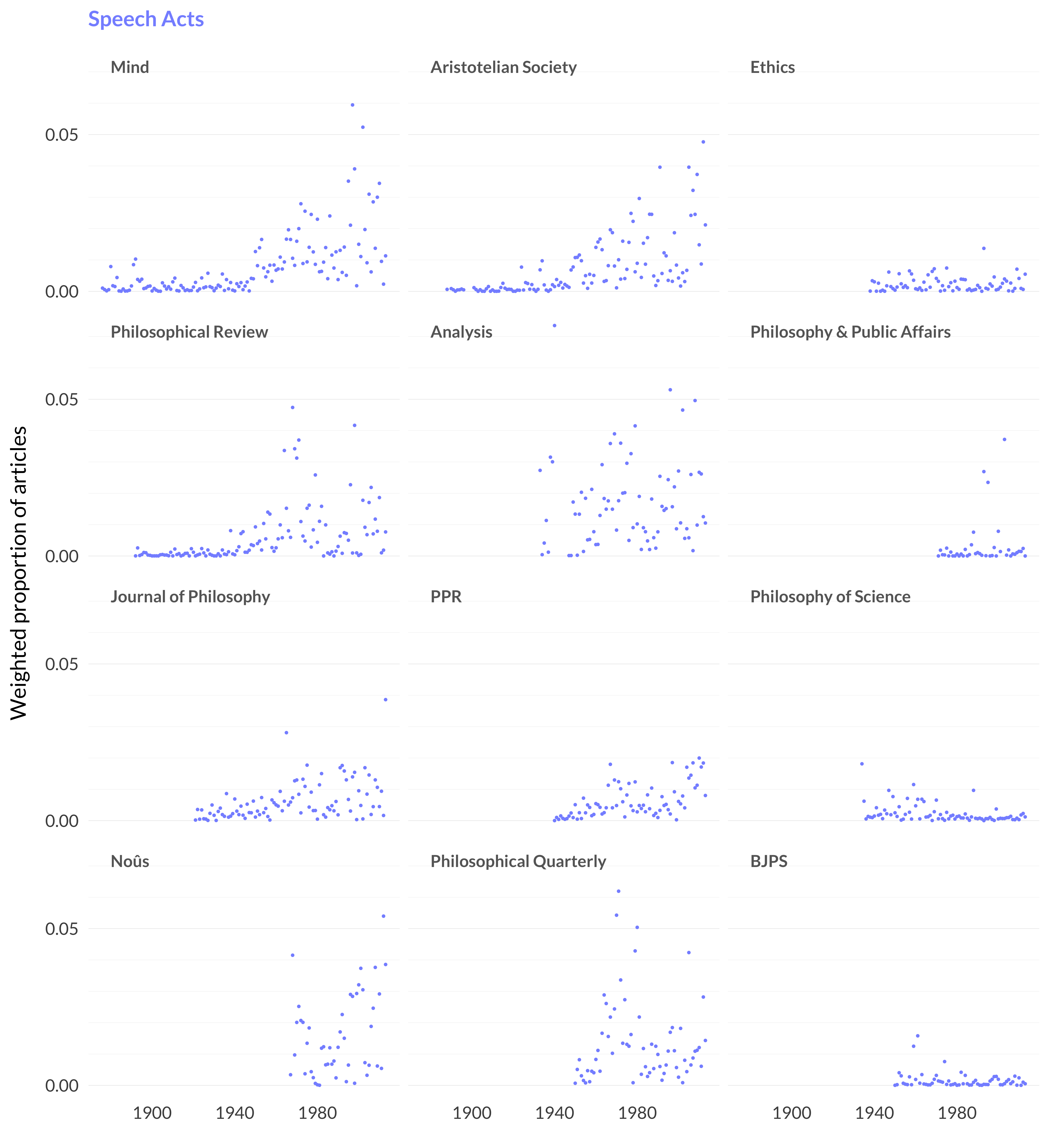2.63 Speech Acts
Category: Philosophy of Language
Keywords: illocutionary, hearer, utterances, conversation, utterance, grice, speech, austin, audience, speaker, uttered, assertions, assertion, communication, contextual
Number of Articles: 252
Percentage of Total: 0.8%
Rank: 63rd
Weighted Number of Articles: 250.8
Percentage of Total: 0.8%
Rank: 67th
Mean Publication Year: 1986.1
Weighted Mean Publication Year: 1981.8
Median Publication Year: 1986
Modal Publication Year: 1971
Topic with Most Overlap: Ordinary Language (0.0647)
Topic this Overlaps Most With: Sense and Reference (0.0328)
Topic with Least Overlap: Evolutionary Biology (0.00051)
Topic this Overlaps Least With: Egalitarianism (0.00042)

Figure 2.146: Speech acts.

Figure 2.147: Speech acts articles in each journal.
Comments
This graph represents a story that suggests I was in the right place at the right time to see it first-hand. It’s a very distinctively shaped graph. I don’t think any of the other eighty-nine have a peak, then a steep dip, then a second wave, quite like this.
The story behind it is I think fairly well known by now. Austin developed speech act theory in the 1950s, but the key ideas didn’t really get picked up until well into the 1960s. Then the story was developed more by Searle and others, and for a while it looked like a really promising approach to thinking about a number of puzzling features of language. But in part because the early promise didn’t seem to be being realized and in part because it was overtaken by Kripkean and Montagovian approaches, it started to feel like a superseded research program. (And maybe there is a connection here to the linguistics wars (Harris 1995), but I don’t really know how much they impacted the philosophy journals at all.) So by the 1980s and early 1990s it was looking like yet another midcentury research program that had once been quite prominent in the journals, but now wasn’t.
Except at Monash it didn’t look like that at all. Rather, it looked like speech act theory provided the key tools for developing and explaining a really interesting, and provocative, theory of communication. And one of our new junior faculty members was playing a key role in building that theory. It was an interesting enough theory that people were talking about illocutionary and perlocutionary effects in between planning parties in the student union. It felt like if this caught on, then speech act theory wasn’t a superseded research program at all but something that was essential to understand in order to understand the role of language in human society.
It caught on.
That new junior faculty member is now the Knightbridge Professor of Philosophy at Cambridge, and her work, along with the work of other important feminist philosophers, has transformed our understanding of speech acts. And it is responsible for one of the only second acts in analytic philosophy, as speech act theory itself went from being on the path to obsolescence to a central place in philosophical theorizing.